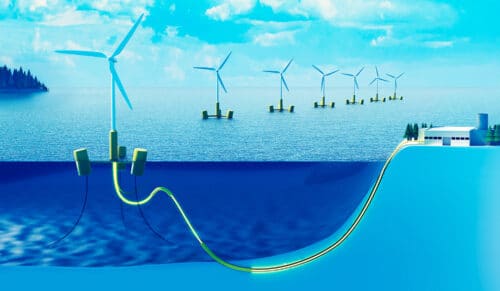A revolutionary system developed in Tokyo minimises cable damage and maintenance costs for offshore wind farms.

A novel system for monitoring subsea power cables has been introduced by Yokogawa Electric Corporation in Tokyo, Japan. The innovative ‘OpreX’ subsea power cable monitoring system employs fibre optic temperature sensors to identify damage in cables transmitting electricity from offshore wind farms, enabling cost-effective and condition-based maintenance.
Offshore wind power facilities depend heavily on subsea power cables that are vulnerable to damage from accidents and natural events. Even minor faults can disrupt power supply, causing significant financial losses. Traditionally, inspecting these cables is an expensive process, requiring specialised vessels and divers to navigate cables laid over extensive seabed distances.
Designed to address these challenges, the system continuously monitors temperature variations within cables, a reliable indicator of damage. This technology facilitates “timely interventions,” reducing inspection costs while improving operational efficiency. Energy companies operating offshore wind farms, renewable energy infrastructure developers, and maintenance service providers stand to benefit significantly from this solution. Its adaptability makes it compatible with both new and pre-existing wind power installations, catering to a wide array of stakeholders in the renewable energy sector.
This solution also integrates seamlessly with the company’s OpreX collaborative information server, offering centralised data management through video monitoring and other operational tools. This integration enhances information accessibility, ensuring smooth and efficient operations across wind power systems.
The company’s extensive experience in the wind energy sector ensures comprehensive support from system construction to long-term maintenance. Its approach, based on the “system of systems” concept, aims to unify multiple independently managed systems for seamless operations. This initiative reflects a commitment to fostering sustainable and safe energy generation.
By reducing operational costs and improving reliability, the system sets a benchmark for condition-based maintenance, ensuring offshore wind farms remain a dependable source of clean energy while advancing renewable energy technology.






